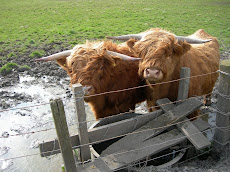Enacted to Combat Crime across the English\Scottish Border
The Border Laws, formulated in the Mid 13th Century, were unique in British History. They were an Attempt to Control the Scottish\English clans of the Border country. In their 350 years existence the Border Laws would be amended many times in an effort to bring order and peace to the Border Lands. They would not succeed.
The Border Line is Determined
In 1249 twenty-four knights of England and a similar number from Scotland met at the Border Line to determine its course from East to West. It had been determined almost two centuries earlier but ever increasing confrontation between the people who lived either side of it had prompted action from the English monarchy. Henry 111 of England wished to know exactly where the Border Line was.
The Border Laws. Unique in British History
The Line of the Border was determined and the knights set themselves to formulating a series of Laws to which the inhabitants on both sides of the Line must adhere if order, control and peace were to prevail. These Laws were specific to the Border Lands of England and Scotland as it was recognised that the ordinary laws of both lands were ineffectual in dealing with the kind of crime which was endemic in the Border lands. They became known as the Border Laws, Leges Marchiarum. They would serve for the law in the Border Lands for centuries.
The Border Law is Formulated to Control the Reivers
The chief concern of the knights was "wanton disregard and prejudice". They recognised that the Border Line was being ignored by the people, known now as the Border Reivers, who lived on both sides of the Line, and that this had led to ever increasing confrontation. Theft, maiming and even murder were often the result of the conflict which existed. Anyone committing a crime in the opposite realm would never be brought to justice in their own. In their own country they would be lauded as the perpetrator of one more successful raid against the enemy. Thus was justice "prejudiced".
The Day of Truce Becomes the Mainstay of the Border Law
The deliberations of the knights concluded that felons should be brought to "knowledge of Marche". For Marche read Border. Once captured they should be brought to the Border, at or near a town, but as time and custom prevailed, to the very Border Line itself for trial and judgement of their crimes. At a time when the relationship between England and Scotland was at best one of uneasy peace and at worst all out war, this was a hazardous and dangerous undertaking. And so the "Day of Truce" became the mainstay of the enactment of the Border Law.
The Border Line is the Venue for Trial
The "Day of Truce" was a day when English and Scots would meet across a river or burn (stream), or hill top which had become the Border Line. It was a Day when Truce between the two countries reigned and when felons would answer for their crimes. Those people who attended to ensure fair play were confident that they had "safe conduct".
The Assurance of the Truce is Part of Border Law
No one was likely to attend the Day of Truce without some confirmation that they would be safe in doing so. Often English and Scottish would meet at the Truce who were at feud with each other and had been for many generations. It was often a nervous meeting! Thus the "Assurance" of the Truce came into being. The "Assurance" laid down that all would be safe from sunrise of the "Day of Truce" until sunrise of the day following the conclusion of the trials of the miscreants and felons, the Reivers, brought to the Truce for judgement.
Border Law is Ineffectual against the Border Reivers
To reive is to thieve. The Border Reivers held sway in the Border Lands for many a century. The Border Laws would prove to be ineffectual against their nefarious activities for many reasons, not least the policies of the English and Scottish governments who often welcomed the unrest and upheaval which had taken the English Scottish Border by storm.
http://www.reivershistory.co.uk
Article Source: http://EzineArticles.com/?expert=Tom_W_Moss
Subscribe to:
Post Comments (Atom)











No comments:
Post a Comment